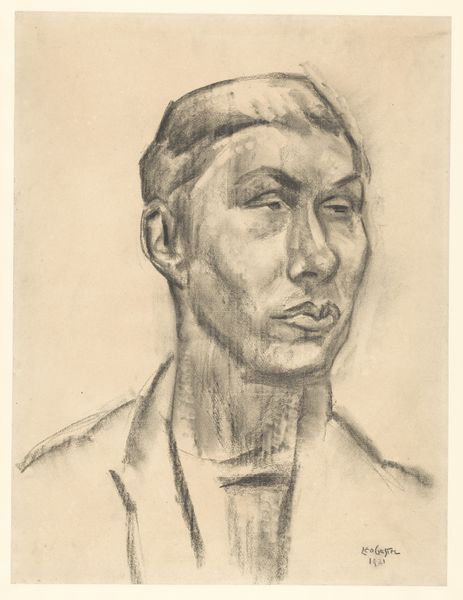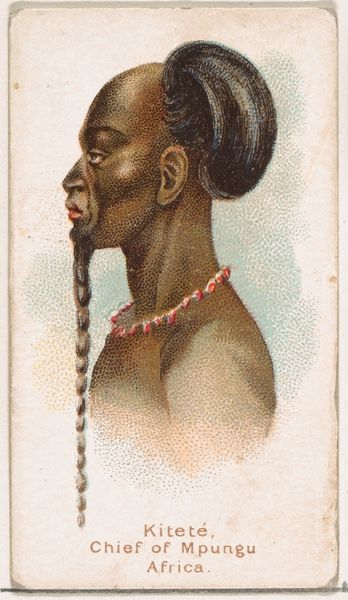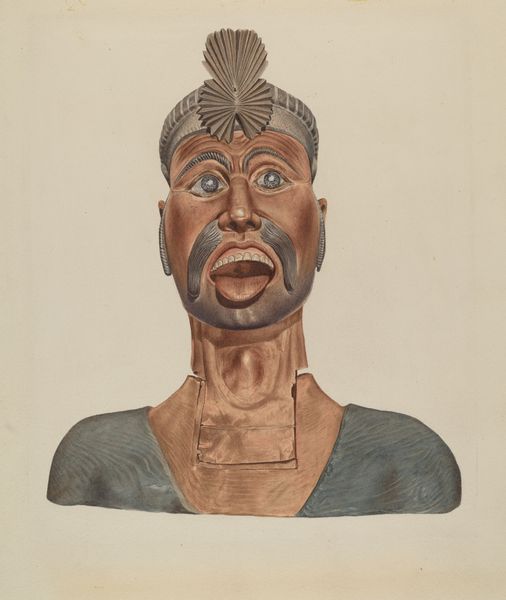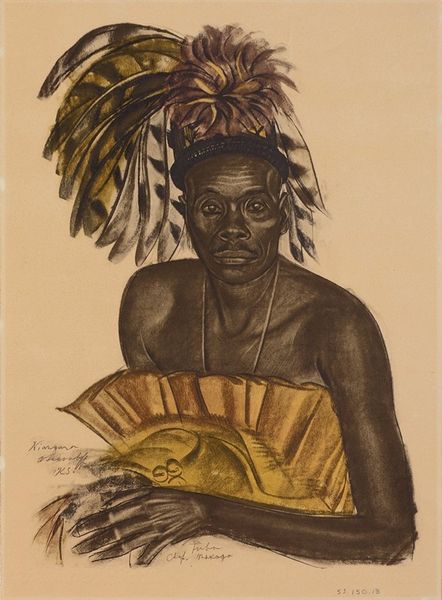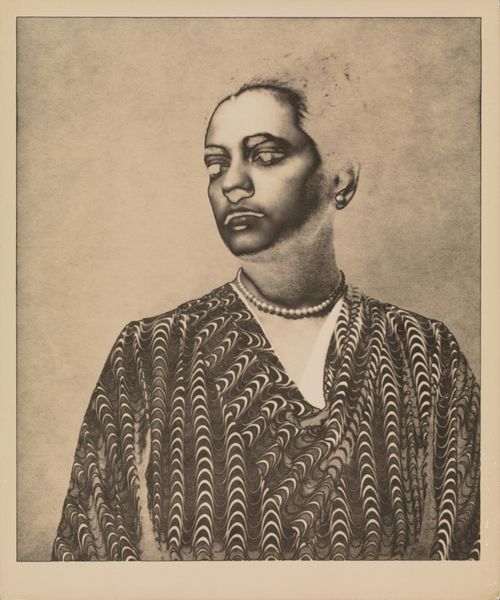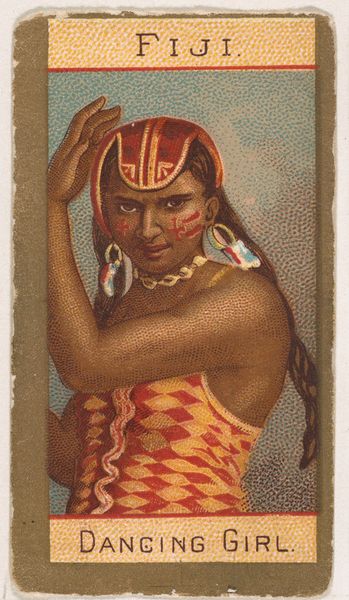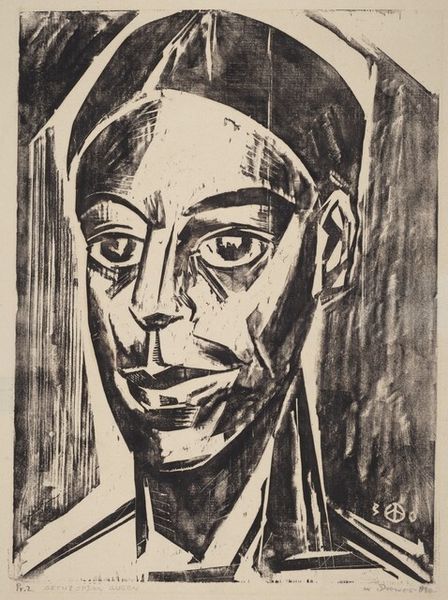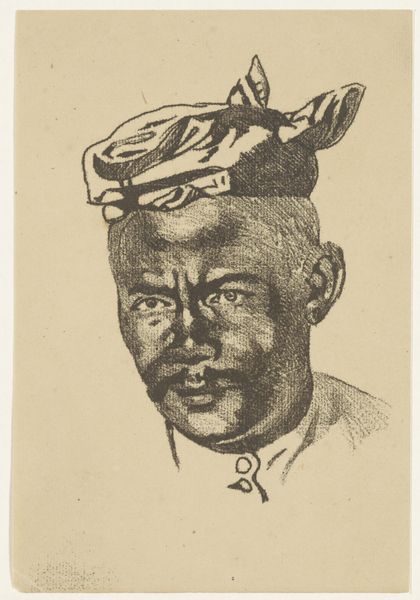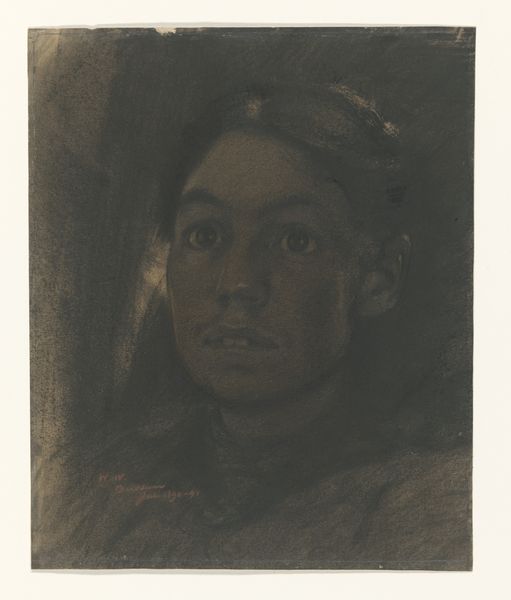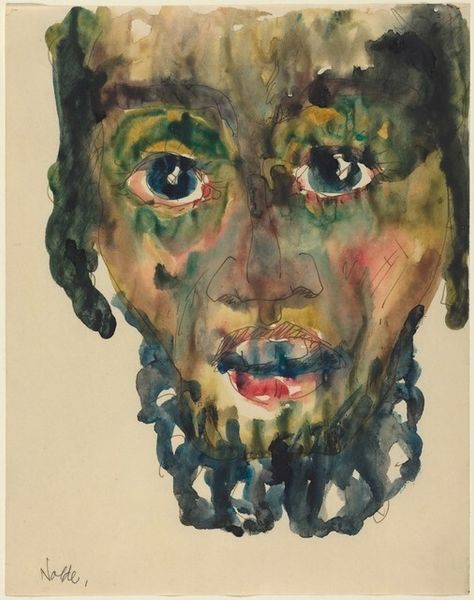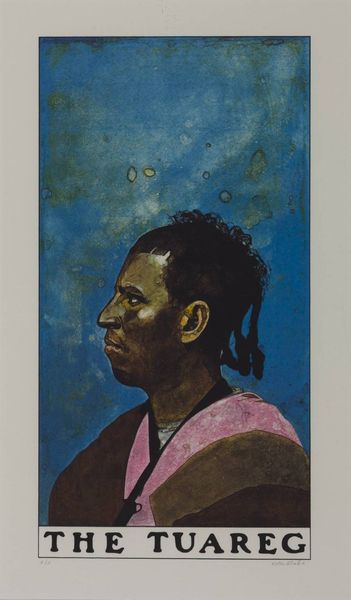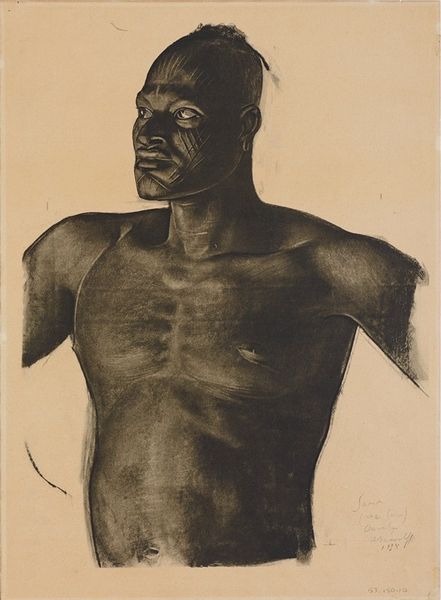
drawing, coloured-pencil, print
#
portrait
#
drawing
#
facial expression drawing
#
coloured-pencil
# print
#
caricature
#
portrait reference
#
animal drawing portrait
#
portrait drawing
#
facial portrait
#
portrait art
#
modernism
#
fine art portrait
#
celebrity portrait
#
digital portrait
Copyright: National Gallery of Art: CC0 1.0
John Melville Kelly created this print, Mahi'ai, using etching and aquatint. The image depicts a man, presumably Hawaiian, and the title translates to "farmer." Kelly's work often portrayed the native people and landscapes of Hawaii, a territory annexed by the United States in 1898. Understanding the context of American imperialism is crucial here. How did artists like Kelly contribute to or challenge the dominant narratives about Hawaiian identity and culture during this period? Was the goal to create an authentic portrayal of the local population, or did he perpetuate existing stereotypes? To fully understand the role of this image, consider the history of ethnographic representation and the market for exoticized imagery. Research into exhibition records, period publications, and the artist's biography can offer deeper insights into the social life of this art. The meaning of art is always contingent on the social and institutional context in which it's made and viewed.
Comments
No comments
Be the first to comment and join the conversation on the ultimate creative platform.

